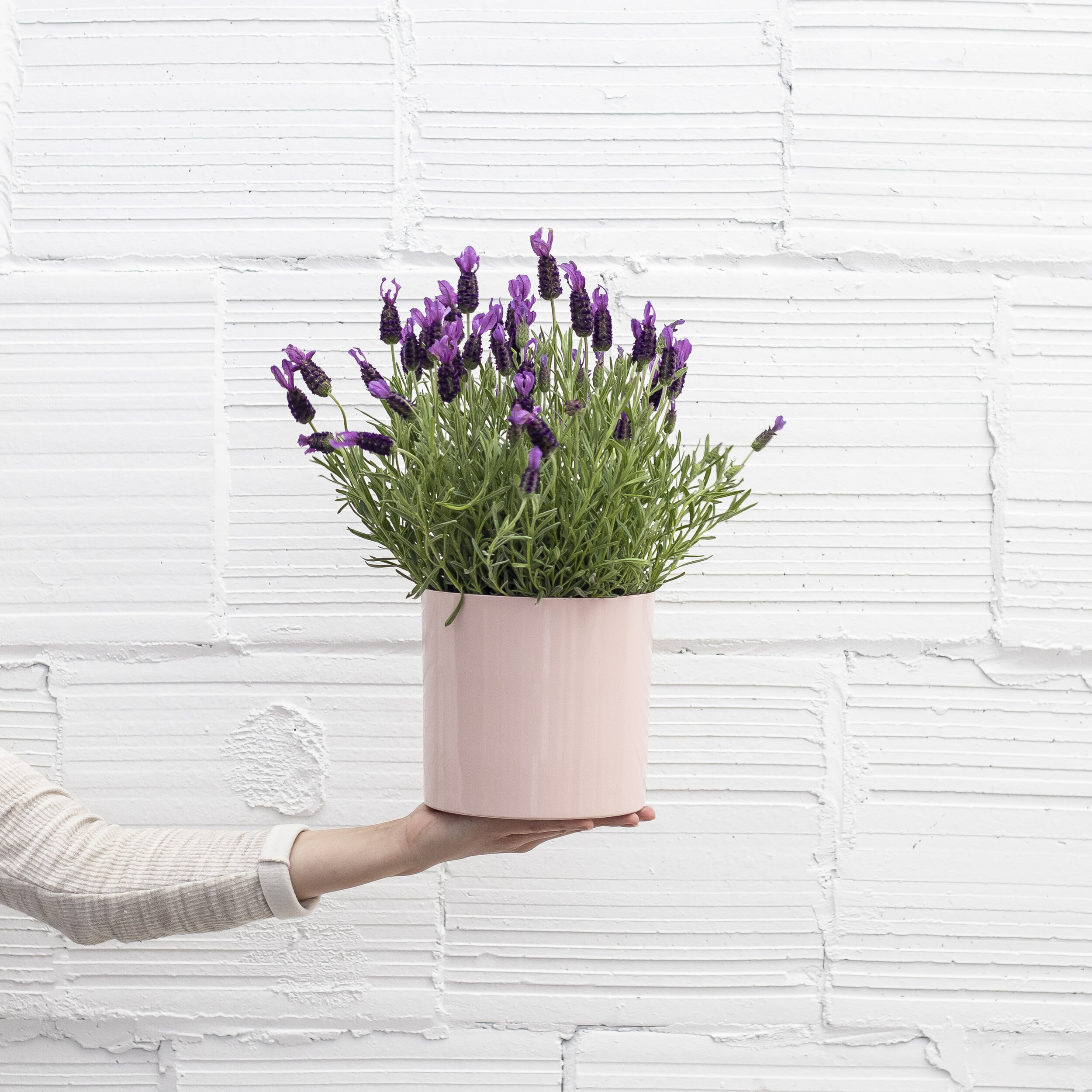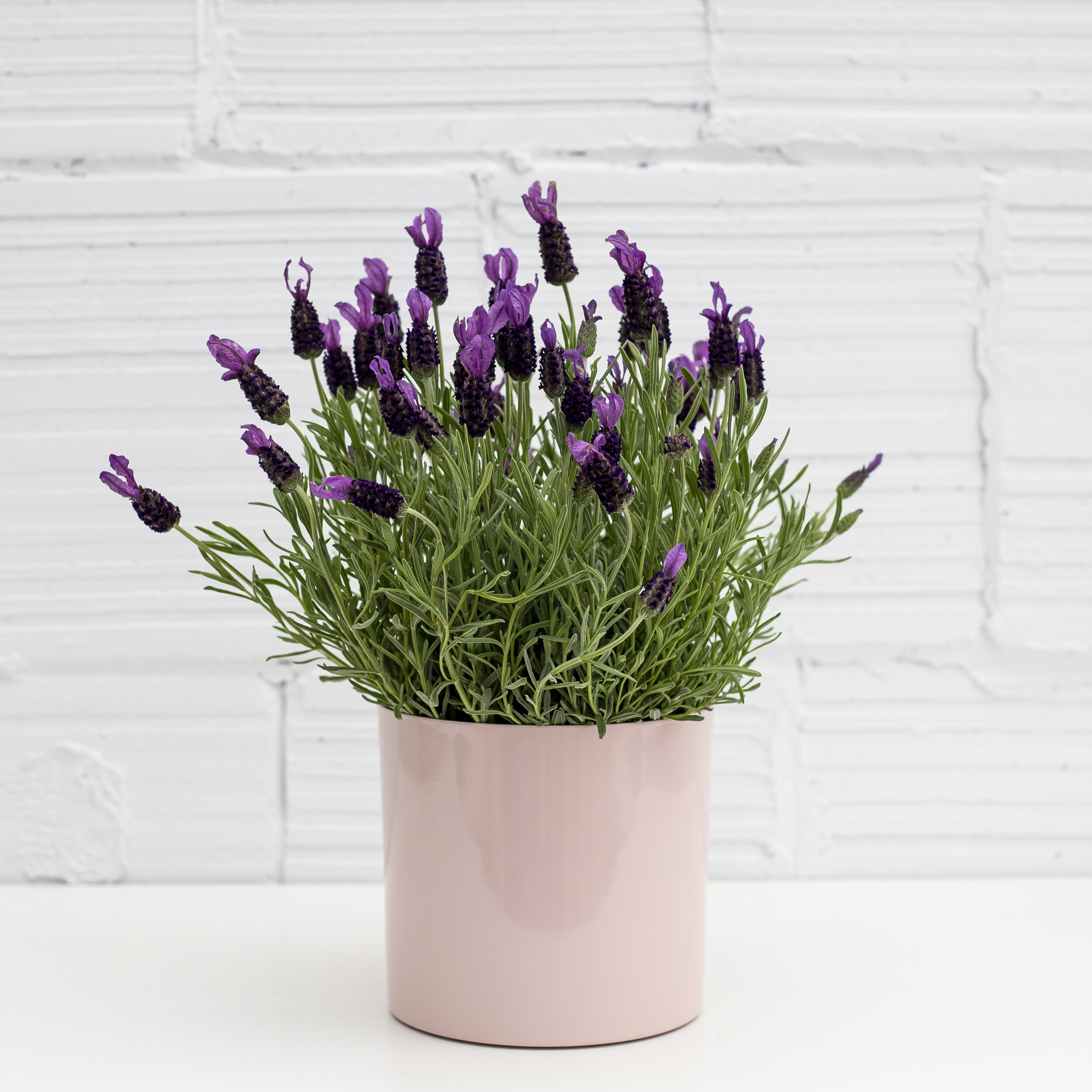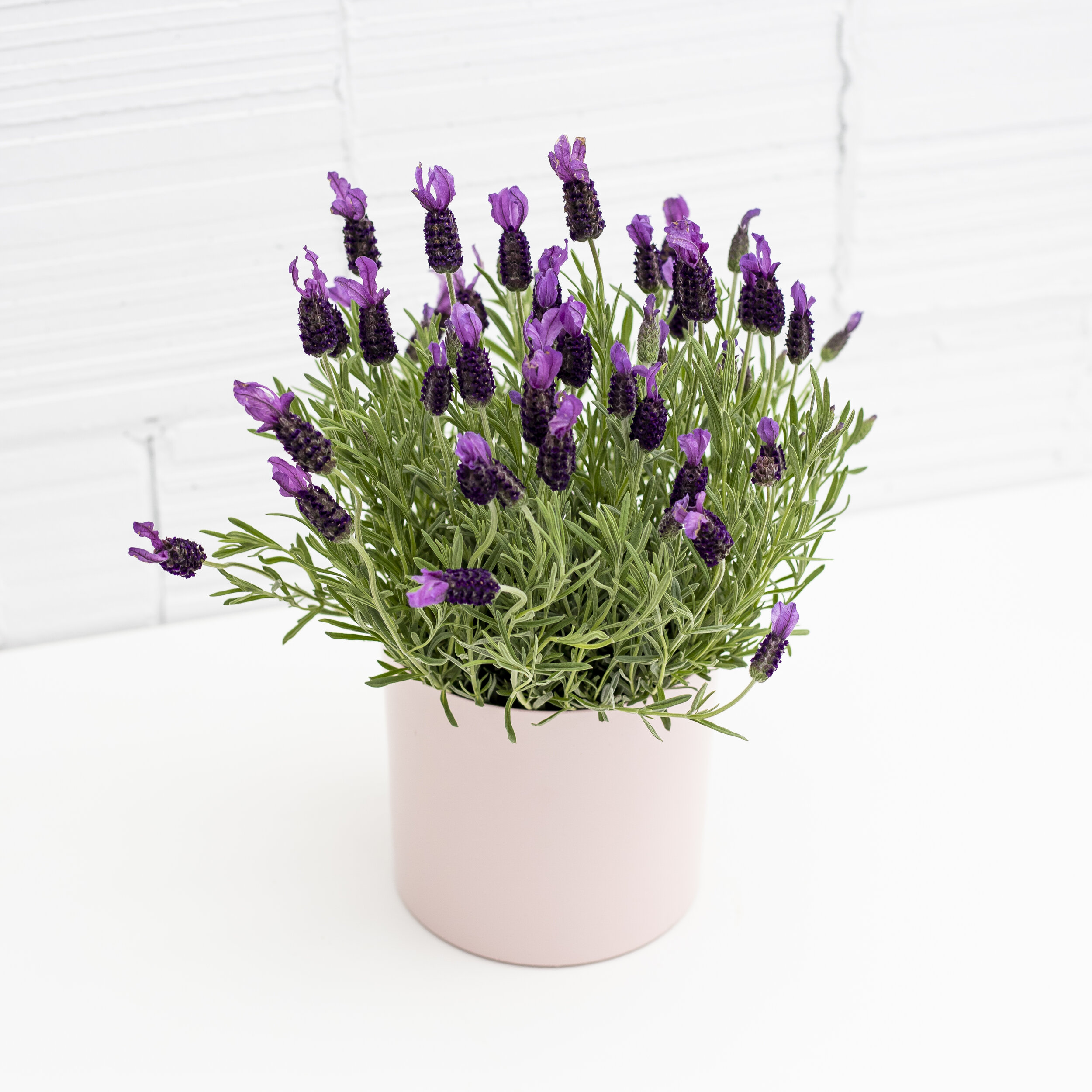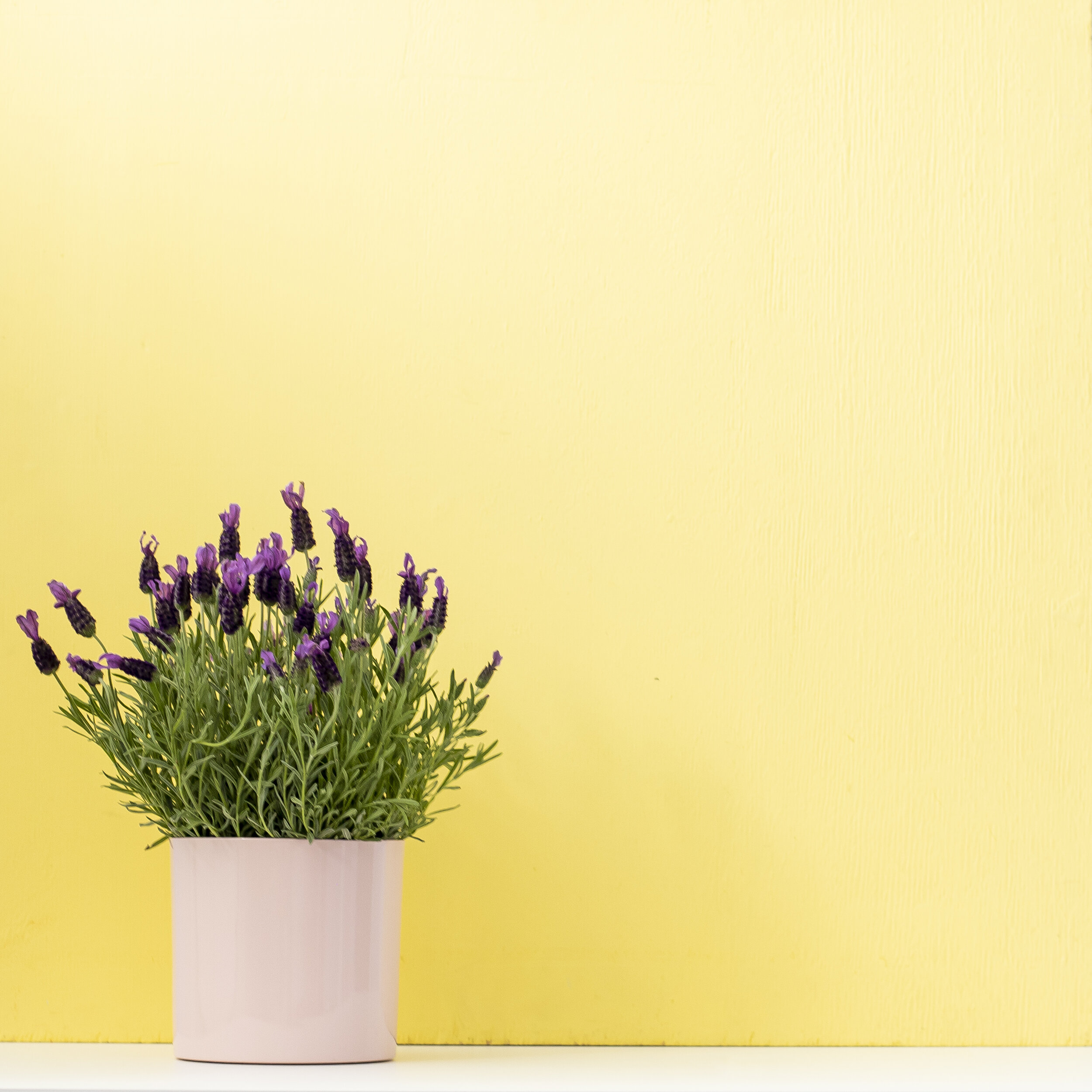
Spanish Lavendar
Plant Care
Step 1: Unbox While We Share Some Fun Facts!
Spanish lavender (or Lavendula stoechas) is one of about 40 varieties of this sun-loving purple plant. This herb thrives in hot, dry climates, so you’ll want to make sure that your new plant pal gets LOTS of rays and just enough water to keep it happy. At the top of each flowering stem of Spanish lavender are longer, lighter bracts that almost resemble bunny ears, giving it a unique appearance compared to the more common English lavender - how lovely!
Step 2: Add Just Enough Water
Less is more when it comes to watering your Spanish lavender. This plant is very sensitive to overwatering and will have a hard time recovering from being waterlogged, so adding just a bit of water at a time is key.
To help make watering this tender plant as easy as possible, we send your plant in a plastic grower’s pot (that nestles perfectly within its decorative vessel). Just pop it out, place it in the sink, and water as needed! Let it drain completely in the sink to prevent overwatering.
Step 3: Place In Direct Sunlight!
Spanish lavender loves (!!) direct sunlight and extreme heat. In fact, getting too little sun and heat can dramatically shorten your lavender’s lifespan and prevent those fragrant flowers from blooming, so don’t be shy! Got a patio or balcony? An outdoor table in full sun is a prime location for your new plant pal, so let the sunbathing begin!
Bonus: Ready To Replant?
If you have a sunny yard, try transplanting your lavender! You’ll be most successful if you live in hot, dry environments with mild winters. Try to wait until the spring to minimize transplant shock, but summer or early fall will do if you’re eager to get started.
Look for a spot that receives at least 6 hours of direct sunlight per day and has well-draining soil (adding sand and grit can help with that)!
When you’re ready, carefully remove your lavender from its pot (roots, soil, and all!), and replant it in your chosen location. Water it diligently for the first year as it adjusts to life in your garden. If kept happy, you’ll be able to enjoy your Spanish lavender’s lovely fragrance and sweet blooms for countless summers to come!



